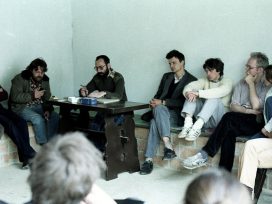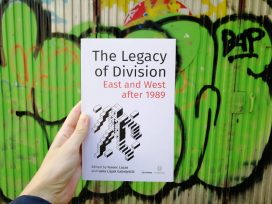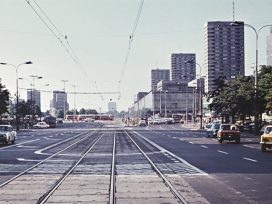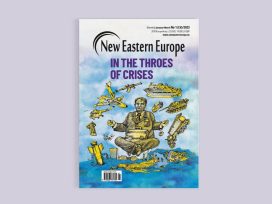In the midst of the euphoria of the 1990s, the countries that emerged from the breakup of Yugoslavia seemed to be spoiling the party. While Europe was ready to celebrate unification, people were killing each other in the Balkans. It was a tempting moment at which to dismiss this part of the world as an alien region, simply not part of the same club. When the European Union opened its doors to the countries of central Europe, albeit with little initial enthusiasm, no such offer was on the table for post-Yugoslav countries.
The end of communism was also different in Yugoslavia. There was no popular uprising and there were no mass protests for democracy. The soft authoritarianism and pluralist competition in the state meant that democracy was not a prime demand. When protests did take place, they were more about national self-rule than self-rule by citizens. But how exceptional, in actual fact, was the Yugoslav exception?
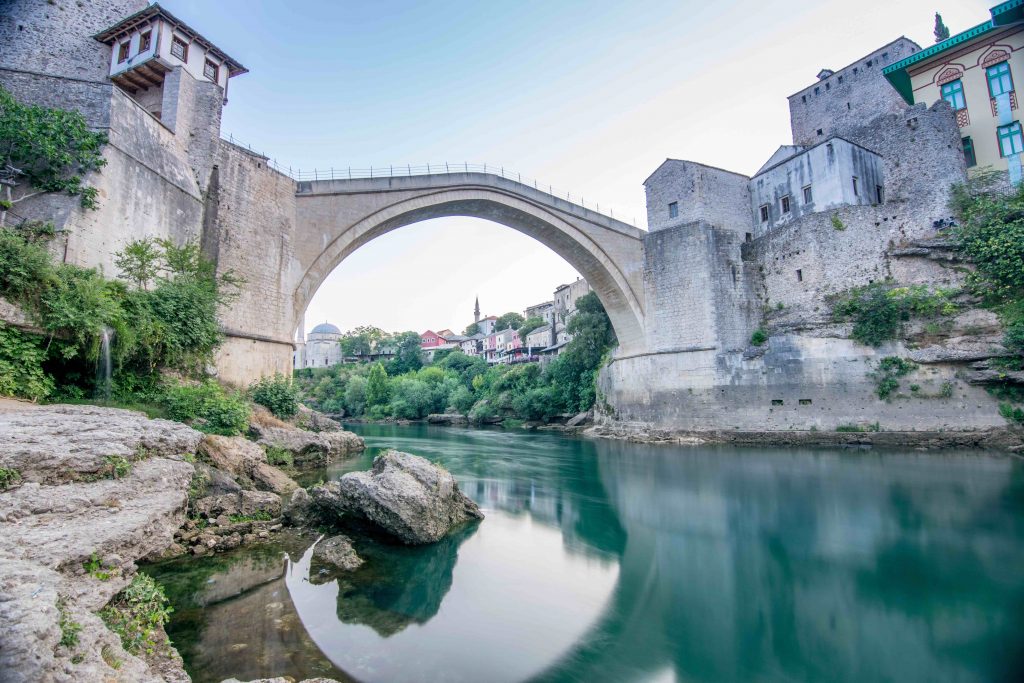
Mostar bridge Bosnia and Herzegovina (2017). Photo source: Photo by Faruk Kaymak on Unsplash
In the early 1990s, the Bosnian comedians known as the Nadrealisti (the ‘surrealists’) had a different take. Famous for their black humour and anticipating the path their country would take, they had a skit in which a European observer peeks over a wall and observes the end of a century of Yugoslav wars. The last surviving Yugoslav is invited in to join ‘our small friendly community’. But during a celebratory feast, the Europeans gradually descend into disagreement. As the ensuing argument heats up, the last Yugoslav flees, stuffed with the sumptuous food on offer. In the final scene, an observer from Yugoslavia looks over a wall onto United Europe to monitor the war being waged there. As a precautionary measure, he removes the ladder before going for a beer, just in case ‘one of those fools comes here’.
For the Nadrealisti, and many others in Yugoslavia, the prospect of war seemed just as absurd in 1990 as it would to most Europeans today. While war still remains unimaginable in Europe, the fracturing of Europe shares some similarities with the fate of Yugoslavia. Slovene economist Jože Mencinger has compared the European Union to Yugoslavia, arguing that both constellations failed to overcome differences among their members. Yet the differences between the European and the Yugoslav stories remain striking. Any country can leave the EU – though of course Brexit illustrates the great difficulty of doing so – whereas there was no clear legal way out for the Yugoslavian republics. The EU is a democratic union that, despite its contentious standing in some quarters, has agreed upon democratically legitimate decision-making mechanisms. Yugoslavia never managed to do this.
But apart from these institutional differences, both projects faced a similarly broad challenge in dealing with social and political divergence and convergence. Both were founded to promote prosperity and make war impossible among their constituent parts, while advancing the idea of shared values and promising the more impoverished regions that they would be able to ‘catch up’. This project failed in Yugoslavia, as the more affluent republics grew richer and the most underdeveloped regions fell further behind. In the EU, convergence still works for the countries of central Europe. Every single country except Slovenia has moved closer to the EU’s average GDP per capita, though none has actually reached it; the Czech Republic is the closest, at 89 percent. Major divergence has come in Europe’s south, where Portugal, Spain, Italy, Cyprus and especially Greece have fallen further behind. In 2006, Greece’s per capita GDP was close to the EU average (96 percent); by 2017 it was only two-thirds of the average, at the same level as Latvia. Thus the idea of North-South convergence has been shattered. It is not just the economic crisis, but also the increasing gap between north-western Europe and southern Europe that has facilitated the rise of leftwing populist parties such as SYRIZA, and of right-wing parties like the Lega in Italy.
There is, however, more to convergence than just economic approximation. During the early years of transformation, many expected central Europe to pursue western models. Nowhere was the import from the West of everything from managers and university professors to companies, media and political parties more visible than in the former East Germany, where the state itself was also imported from the West and little remained at all of previous structures. Elsewhere, the state itself survived, but laws, parties, institutions and the economy were still based on external models.
This led to the sovereignty paradox. Most of the democracy movements of 1989–91 focused on regaining sovereignty from the Soviet Union and from small unrepresentative ruling elites. However, once this was accomplished, the multiple challenges of transition seemed to require, the uncritical importing of models from the West. Europeanization also meant that laws and institutions had to be adopted to fulfil EU requirements, without taking the time to figure out how suitable or appropriate they were. Sovereignty was therefore limited, but the only way to restore independence still was as a member of the EU, as the restrictions imposed by the conditionality of accession would then be lifted. This might seem somewhat topsy-turvy to a Brexit supporter, but from the perspective of a citizen in central Europe sovereignty could only be protected from within the EU. Thus, even Eurosceptic populists and nationalists like Orbán or Kaczyński do not seek to leave the union. There are of course economic reasons for this too, but the underlying fear of loss of sovereignty persists, as does the risk of being put under pressure by larger powers outside the EU.
The second paradox is that of political import. The import of institutions and laws was an easy way to quickly establish democratic structures and provided a well-tested template. However, it also avoided deliberation and experimentation, resulting in democratic mimicry. The import of institutions has been successful in countries where informal and irregular practices did not subvert them and undermine their independence, as they did in south-eastern Europe. But even there, islands of institutional autonomy existed to enforce the rule of law. Here the Romanian anti-corruption agency DNA or its Croatian counterpart USKOK have in some respects been particularly successful.
Democratic mimicry has mostly taken place within political parties. After 1991, a plethora of political parties emerged across central, eastern and south-eastern Europe that looked largely like their western counterparts, with some calling themselves liberal, others social democrat and others again conservative. These parties found support in the foundations of German political parties and joined transnational European alliances. Once the respective countries joined the EU, the parties became part of large factions in the European Parliament; at first glance, they ‘became European’.
However, this merely disguised the fact that most of the parties actually functioned very differently to their western counterparts. There was often little variation in their programmes, which offered ‘reform’, ‘Europe’ and other similarly vague goals. The main difference was the ideological divisions that stemmed from the legacy of the communist past and, at times, differing social values. Structurally, these parties were driven by elites, as mass politics had a whiff of the communist era about it. Besides, party membership and party-based political activism was declining in the West too. Thus, few parties were able to articulate and aggregate citizens’ views. This was not so visible or important in a time of ‘Europeanization’, where most institutions, laws, and policies came from abroad anyway. Nonetheless, these parties and their elites offered little competence when it came to governing their countries after having achieved EU membership. In some cases, parties in the region were mere employment agencies, especially in south-eastern Europe, where joining the ruling party is the way to get a job in public administration. This still remains the most desirable employment option for many citizens in a region where up to ten percent of the population are members of a political party.
In other cases, these parties are one-man or, more rarely, one-woman shows, driven by the popularity of a single figure and often by his or her resources. The European party families have incorporated all of them regardless and have yet expelled none. Fidesz in Hungary has remained part of the European People’s Party, despite rejecting liberal democracy, eroding democratic checks and balances, manipulating the media and running anti-migrant and anti-Semitic campaigns. Similarly, the Party of European Socialists still includes the Social Democratic Party (PSD) in Romania, which over the years has established a kleptocratic control over state resources. And the liberal ALDE group still includes ANO 2011 in the Czech Republic, a party run by the country’s second richest man, Andrej Babiš, who controls the two largest Czech newspapers and has been investigated for corruption by the EU anti-fraud unit OLAF. These parties did not become more accountable or democratic via their membership of the European party families. On the contrary, their membership enabled them to protect their positions. Of course, this syndrome is not unique to central and south-eastern Europe, as Berlusconi’s stranglehold over the centre-right in Italy during the 1990s and the 2000s highlights. Another case in point when it comes to personality politics is the right-wing populist Geert Wilders, who heads the Dutch Party for Freedom, that has only one member, Wilders himself. However, these are anomalies, and not what typically defines political parties.
Igor Štiks, a prominent writer and academic from the post-Yugoslav space, recently asked whether Europe has Balkanized itself while attempting to Europeanize the Balkans. However, the idea that Europeanization can transfer western institutions, values and ways of doing politics to central, eastern, and south-eastern Europe has to be challenged. As highlighted by the paradoxes surrounding sovereignty and the import of systems, transformation in these countries did not merely create copies of western models but transformed these very models themselves.
Clearly, when such transfers do not work out or are far from being a seamless affair, then a more complex process of negotiation, adaptation, and re-moulding of ideas, laws and norms takes place. But what of the ‘Balkanization of Europe’? We have to be careful about framing things in this way, or in the way that the Bosnian surrealists framed things two decades ago, in terms of observers peering over walls and the subtle contagion of ideas. There is a risk of reducing the Balkans to a stereotypical region that is misperceived as threatening to infect the rest of Europe with intolerance and hatred. Such ‘Balkanism’ tends to project, as the influential writer Robert Kaplan in his Balkan Ghosts, all of Europe’s negative features onto its eastern or south-eastern regions. But it is not that the Balkans or central Europe threaten to infect the rest of Europe with the bugs of illiberalism and intolerance; rather, both regions have experienced some of the structural causes of such trends earlier and more intensively than the rest of Europe.
Central Europe is post-communist, the Western Balkans are post-Yugoslav, post-war, post-socialist; but there is no word to describe what they currently are, as if the present remained permanently elusive. The defining feature of theese central, eastern and south-eastern parts of Europe is that they are in a place where there is no name for the present. In the Western Balkans, the only term to describe the present is ‘crisis’, with minor exceptions. There was the post-Tito Yugoslav crisis, the crises of the wars, of authoritarianism and economic collapse, and finally, the new poly-crisis resulting from the global financial collapses, the migration crisis and the EU crises. The only brief period of non-crisis might be during the early 2000s, between the end of the wars and the onset of the global economic crisis. It is no surprise that such a state of permanent crisis makes many people long for a past when the current crisis was yet to arrive, or could be imagined away, whether by retreating to some golden national past that needs to be restored, or to the golden era of Yugoslavia. Thus, nostalgia is an essential feature of everyday life.
Though the countries of central Europe avoided war and the violent collapse of their states, recent decades have been characterized by transition, transformation, and change, resulting in what has been termed ‘delayed transformational fatigue’. The term reflects the disappointment in a seemingly perpetual process. It is disillusionment that has driven both the illiberal politics promising an end to never-ending transition, as in the cases of Fidesz in Hungary and PiS in Poland, as well as a general withdrawal from politics. Consider that, in 2016, less than 40 percent of Romanians participated in national elections, and only 13.05 percent of Slovaks voted in European Parliament elections in 2014. One final option is to make an exit, as millions of citizens who have left for Germany, Austria and Ireland have done. More than ten percent of the population of most EU member states in the region live outside their home country – around double the average for western European countries.
Nostalgia remains a potent force even though the former socialist regimes offer little to be nostalgic about, unlike the much more liberal and open Yugoslavia. In a 2014 survey, Romanian citizens fell into two groups: those who consider the communist period to have been good and those who consider it to have been bad for the country. A majority of respondents considered Nicolae Ceaușescu to have played a positive role.This longing for the past, as Svetlana Boym has argued, reflects less about history and more about the present. Stark inequalities and poverty partly explain why nostalgia is so strong, but it is the uncertainties of never-ending transformation and crisis that are the driving forces of nostalgia and of disillusionment with the present.
Continuous crisis and open-ended transition have created a permanent sense of anxiety which is profoundly destructive for liberal democratic politics. This anxiety has caught on in southern Europe, fuelled by its divergence from the EU’s average GDP per capita mentioned earlier. The rise of populism in western Europe is also deeply embedded in the politics of anxiety, including in the context of the Brexit referendum and in the form of far-right parties like Alternative for Germany (AfD) in Germany and the Freedom Party of Austria. Meanwhile, post-socialist elites have failed to build parties and countries that put an end to all that is ‘post’, and to bring about a society based on something more solid than an endless process of leaving something behind without ever arriving at an intended destination. This should be seen by European elites as a warning signal.
Crises, uncertainty, and the threat of never-ending change are destructive forces. In this sense, East and West are not divided, nor has the East or the Southeast ‘infected’ the West. What has become more visible in recent years is that there is not one model for Europe. Rather, societies and governments are constantly learning from each other across the continent. But this also means that populists from all over Europe are bound to take a look at the current success of Orbán’s populist regime based on ethnic nationalism. At the same time as becoming more multi-directional, Europe has also become a more dangerous marketplace of ideas.
The division between East and West is just one of many fissures in Europe’s diverse structural setup. However, the existence of multiple and divergent lines of fragmentation do not rule out coalition building and transnational solidarity. The risks attached only become more acute when these various lines of division become mutually reinforcing, separating centre from periphery, poor from rich, East from West. Rather than focusing on differences, however, I would argue that the greatest threat to Europe is the spread of angst-ridden politics. Societies in permanent states of crisis and transition are bound to struggle. This is the biggest lesson of the past 30 years.
